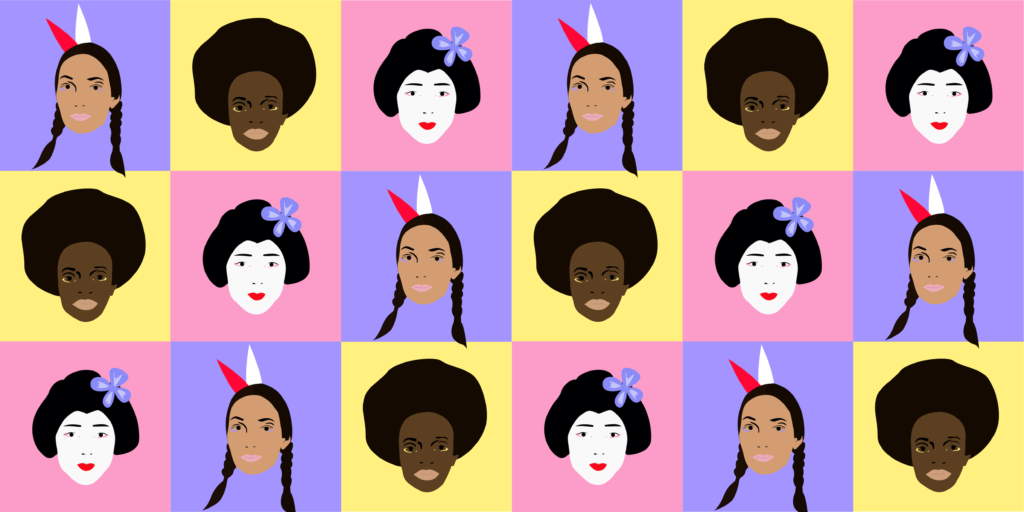The term ‘cultural appropriation’ is often met by many with a smirk or an eye-roll. The term has become almost synonymous with ‘political correctness gone mad’, and is now mostly eliciting responses of derision or anger, detracting from the fact that it is actually a serious issue. It’s now being applied to pretty much any kind of cultural output, from fashion to music to slang, and creates a culture in which people feel attacked for anything and everything they do or say. It seems that every other day throws up something else deemed to be ‘problematic’, be it hooped earrings or even Vans, and it’s all too easy to start making fatalistic statements.
The problem lies in the fact that the discourse surrounding cultural appropriation has become overly trivialistic, intent on ‘banning’ everyday items, leading people to view cultural appropriation as more of a dogmatic list governing people’s behaviour, rather than focusing on why these things are problematic in the first place. There’s a lack of nuance in the debate, which is dangerous – it can result in people dismissing cultural appropriation as trivial, oversensitive nonsense. In the worst cases, these misunderstandings can result in people thinking that the aim of cultural appropriation’s critics is to prevent any kind of cultural mixing at all, and to have a bland, monocultural ethnostate, where no elements of other cultures are to be found anywhere. Ironically, this idea is perhaps closer to an alt-right vision of the world, eerily recalling Richard Spencer’s dream of a world where each race has their own nation state, and there is no cultural mixing beyond borders. It’s this misconception that leads people to see cultural appropriation as an attack on multiculturalism and freedom of expression, which of course, couldn’t be further from the liberal, left-wing progressive ideals of those who call out cultural appropriation in the first place. The term has been so stretched and distorted that it’s in danger of losing its original meaning and potency; that is, to encourage people to treat other cultures with respect.
The fact is, cultural appropriation is a complex subject, and requires some element of thought, nuance and sensitivity. As K. Tempest Bradford writes in NPR, “cultural appropriation can feel hard to get a handle on, because boiling it down to a two-sentence dictionary definition does nobody any favors.” Cultural appropriation is not, and has never been about the outright banning of appreciating and sharing other cultures. The problem comes when people start ‘borrowing’ from other cultures without any acknowledgement of the meaning, history and significance behind those cultural practices, as well as the implications their ‘borrowing’ might have. The most common and fundamental misunderstanding often comes from a lack of understanding of the power structures at play, and how these have an impact on when cultural appreciation becomes cultural appropriation, or even exploitation. Firstly, they create double standards, for example, when a white person wears dreadlocks it’s seen as ‘cool’ or ‘edgy’, whereas black people face discrimination for wearing the very same hairstyle that was created by and belongs to their culture. Secondly, borrowing from other cultures without being respectful towards the history and significance of the item in question only serves to undermine those cultures, and perpetuate a narrow, surface-level stereotype of the cultures in question. This can be seen with the countless trends ‘borrowed’ from Native American cultures, such as headdresses, dreamcatchers and feathers, which almost always so far removed from the tribe in which they originated that they simply come under the generic ‘Native American’ label, further propelling the myth that all Native American cultures are the same.
Cultural appropriation is by no means a way of shutting down people’s fun and preventing us from celebrating other cultures; it’s more of an appeal for people to treat other cultures with sensitivity and respect. The aim should be to raise awareness of where certain trends originate, and to credit marginalised creators for art and cultural output that would have otherwise been attributed to the (often white) people who have appropriated them. It’s not as simple as not being able to wear something, but rather about why you want to wear it in the first place – is it just because it looks cool and different? Would you still be willing wear it if you had to experience the prejudice and discrimination that comes with being a person from that culture?
It’s time to take cultural appropriation back to its roots, if you will, and to recognise its original meaning and intentions. Thinking about cultural appropriation requires nuance, critical engagement, a willingness to learn, and above all to listen to and learn from those whose cultures are marginalised.
Ananya Sriram
Image Credit: LeAnne Chan

